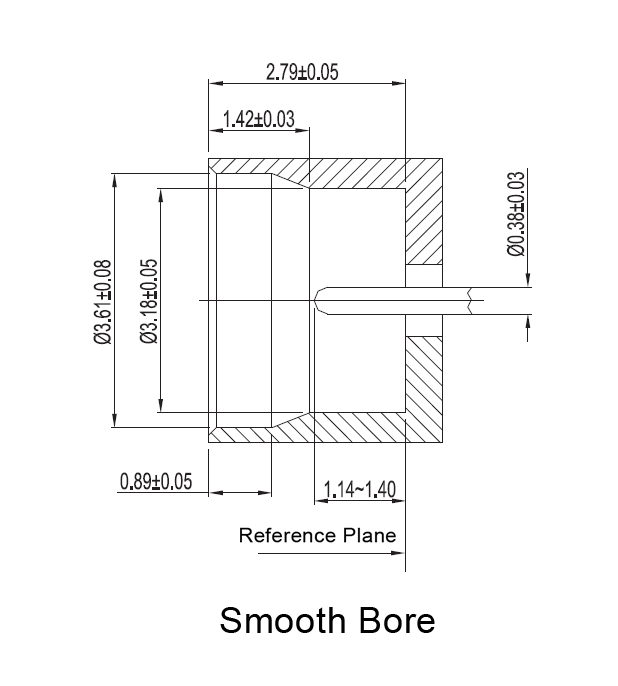Introduction
In the realm of radio frequency (RF) technology, connectors serve as the unsung heroes, ensuring the seamless and reliable transmission of signals. Among the array of connectors available, the SMP (SubMiniature Push-On) connector series shines as a high-frequency push-on connector with a unique interfacing system. Characterized by its inner female-to-female component, often referred to as a "bullet" or "blindmate," and two outer panel, circuit, or cable-mounted receptacles called "shrouds," SMP connectors offer precision connectivity for demanding high-frequency applications. In this comprehensive guide, we will explore SMP connectors in detail, covering their design, technical specifications, historical context, applications, interface standards, variations, and the critical role they play in diverse industries, including military, aerospace, and radar systems.
SMP Plug Connector
![smp plug ra solder ut85]()
SMP Jack Connector
![smp jack ra for pcb]()
Understanding SMP Connectors
1. Design and Construction
SMP connectors distinguish themselves with their high-frequency push-on design. The interfacing system comprises an inner female-to-female component, known as the "bullet" or "blindmate," and two outer receptacles, referred to as "shrouds." This innovative design allows for both axial and radial misalignment, making SMP connectors highly versatile for precision connections.
2. Technical Specifications
To gain a comprehensive understanding of SMP connectors, it is crucial to delve into their key technical specifications:
Impedance: 50 Ω
Maximum Operating Frequency: 40.00 GHz
Coupling Mechanisms: Slide-on/Push-on Coupling, Snap-on Coupling
Interface Standards: MIL-STD-348B
These specifications define the electrical performance, frequency range, coupling mechanisms, and standardized design of SMP connectors, making them ideal for applications that demand high precision and reliability in RF connectivity.
3. Coupling Mechanisms
SMP connectors offer two distinct coupling mechanisms:
Slide-on/Push-on Coupling: This mechanism allows for straightforward connection and disconnection, offering convenience in scenarios where frequent mating and unmating are required.
Snap-on Coupling: The snap-on interface provides varying levels of engage and disengage coupling forces. It is typically employed in PCB (Printed Circuit Board) mount or blind-mate applications, ensuring a secure connection.
Variations and Interfaces in SMP Connectors
SMP connectors exhibit variations in their male connectors, each designed to cater to specific application needs:
Smooth Bore (SB): This variant provides a smooth and easy connection and disconnection process, making it suitable for applications where convenience is paramount.
Limited Detent (LD): LD connectors offer a moderate level of insertion and withdrawal force, striking a balance between ease of use and retention.
Full Detent (FD): FD connectors require substantial insertion and withdrawal forces, making them ideal for cabled connections where higher retention forces are essential.
Catcher's Mitt (CM): The CM variant offers reduced connection forces compared to snap-on interfaces. It allows for sliding connections without physically locating the mating reference planes, accommodating axial and radial misalignment.
Historical Context
The journey of SMP connectors is intertwined with the evolution of RF connectors and the innovative solutions they have brought to the field. Originally marketed by the Gilbert company (now Corning Gilbert) in the 1980s under the trade name "GPO," signifying "Gilbert push-on," SMP connectors have undergone subsequent iterations, including GPPO, G3PO, and G4PO, all of which remain trademarks belonging to Corning.
Applications of SMP Connectors
SMP connectors are versatile components and find their niche in a wide range of applications, thanks to their precision design and high-frequency capabilities. Notable applications include:
1. Phased Arrays and Radar Systems
SMP connectors play a pivotal role in the world of phased arrays, airborne radar systems, and active antennas, where their ability to operate at frequencies up to 40.00 GHz ensures reliable and high-performance connectivity.
2. Aerospace and Defense Systems
Aerospace technology and defense systems, including satellite payloads and avionics, rely on SMP connectors to provide robust and precise RF connectivity in demanding environments.
3. Commercial Microwave Systems
SMP connectors find applications in high-grade commercial microwave systems, ensuring reliable data transmission in applications such as data communication and signal processing.
4. Advanced Research and Development
SMP connectors are favored in advanced research and development settings, where high-frequency precision is essential for experiments and testing.
Interface Standards
SMP Plug Interface
![smp plug interface]()
SMP jack full detent interface
![smp jack full detent interface]()
SMP jack limited detent interface
![smp jack limited detent]()
SMP jack smooth bore interface
![smp jack smooth bore interface]()
SMP connectors adhere to the rigorous standards defined by MIL-STD-348B, ensuring that they meet the stringent requirements set forth for RF connectors. These standards encompass critical aspects of connector design, materials, and performance, providing users with confidence in the reliability and compatibility of SMP connectors across various applications.
Variations Within the SMP Series
In addition to the standard SMP connector series, an even more miniaturized variation known as the Mini-SMP (SMPM) RF connector series exists. The SMPM series pushes the boundaries further, operating effectively at frequencies up to 65.00 GHz. This extreme miniaturization is particularly valuable in applications demanding ultra-high-frequency capabilities while maintaining precision and reliability.
Conclusion
SMP connectors, with their high-frequency capabilities and precision design, have become indispensable components in a wide range of applications, from military and aerospace systems to advanced research and development environments. Their historical evolution and innovative design underscore the importance of innovation in RF technology.
These connectors, with their 50 Ω impedance and a maximum operating frequency of 40.00 GHz, offer high precision and reliability, making them an ideal choice for demanding applications. Their coupling mechanisms, including slide-on/push-on and snap-on options, cater to diverse needs, ensuring secure connections as required.
As technology continues to advance, and the demand for high-frequency RF connectors grows, SMP connectors remain at the forefront, serving as reliable and efficient solutions for engineers, researchers, and professionals seeking precision connectivity in the ever-expanding world of RF technology.
























